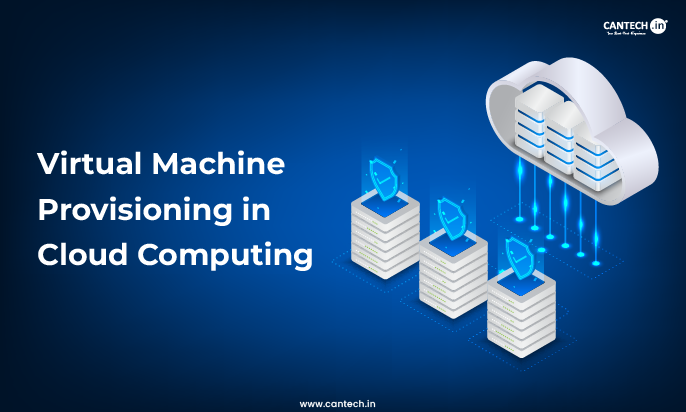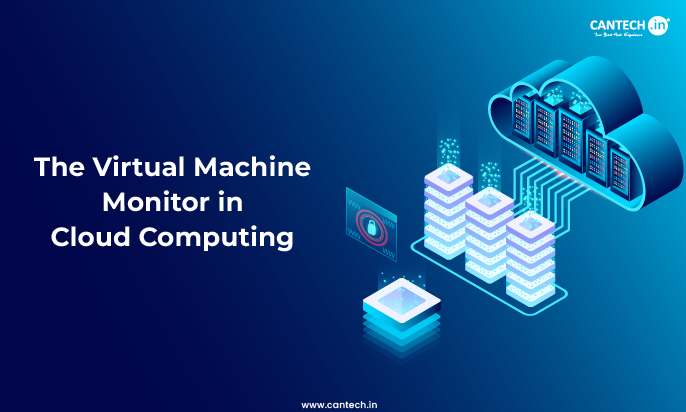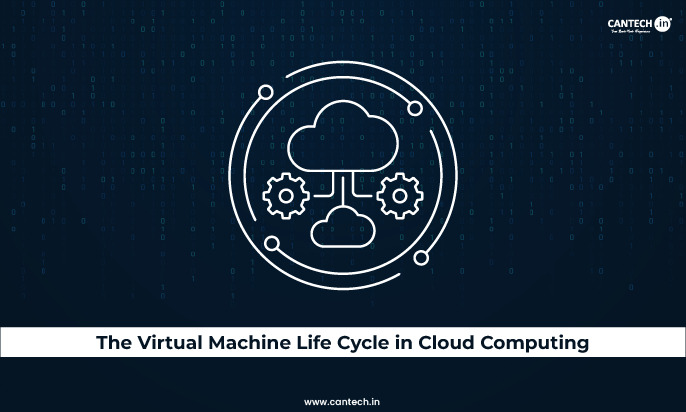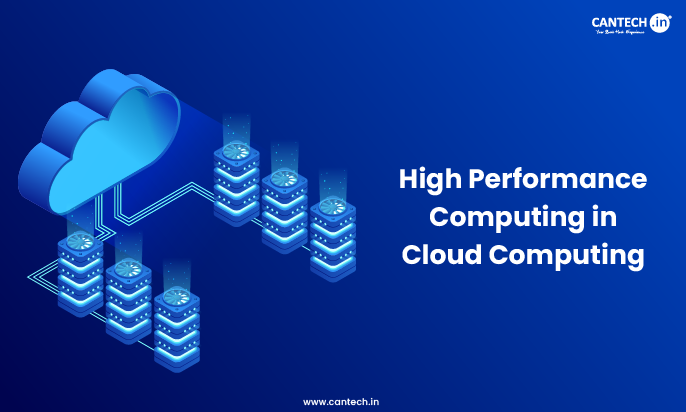Take an example of the need to have a new server to accommodate an upcoming project. In a conventional data centre, this request would get a long chain of events of purchase orders, physical installations and software settings which can take weeks or months. Conversely, in cloud systems, the same can be done in minutes through the process of virtual-machine provisioning. This underlying cloud functionality has fundamentally brought a change in the way organizations are accessing and consuming computing power.
The automated allocation of the cloud resources to make them available to the users is called provisioning in cloud computing. Provisioning virtual machines cases involves the entire process of creating, configuring, and deploying a VM based on the pre-established specifications. The revolutionary aspect of the process is that it is self-service: when the user is authorized to provision resources on demand, IT personnel are not directly involved, and therefore the agility is unprecedented, but the governance and cost-control issues are introduced.
A more in-depth understanding of the virtual-machine provisioning requires an analysis of its technical dynamics as well as its strategic implications. This overall analysis will be taking the lifecycle of provisioning, all the way to the final operation. It will discuss the tools of automation that have been used, the key decisions related to the allocation of resources, and the key cost-optimization measures. The proficiency of these elements takes provisioning beyond being a technical task to a strategic resource.
The Virtual Machine Provisioning Process: A Step-by-Step Framework
A virtual machine is created in a systematic way that puts a balance between the needs of the users and organizational governance. Even though the user interface offered by the cloud providers is reduced to a couple of clicks, there is a lot of complexity behind the scenes.
It often starts with a request submission, be it by a service catalogue, cloud portal or an automated pipeline. This request outlines the requirements of the VM, operating system, compute capacity, memory, storage and network configuration. In the contemporary cloud settings, the approval workflow is usually implemented at this point to provide adequate supervision before consuming the resources.
The system then goes on to the resource identification and allocation after the request has been approved. The cloud management platform identifies appropriate physical hosts having adequate capacity that matches with the VM specifications. In this step, one will verify compute resources, verify network connectivity and storage availability. The scheduler in the platform assigns the best host based on current load balancing, affinity rules, power management and consideration.
The technical mainstay of VM provisioning is the creation phase. The system retrieves the adequate base image, a template containing the operating system and pre-operating software, in the image repository. It afterward allocates the stipulated virtual CPUs and memory, offers virtual disk files on the assigned storage system, and connects the VM to the relevant virtual networks. Finally, the system uses customized configurations of the VM instance, such as hostname, network settings, and security policies.
The VM is actualized by the final deployment stage. The hypervisor in the chosen host server will start the virtual machine which will boot up its own operating system and will run any eventual customization scripts. The system usually carries out post-deployment validation to ensure that the system has been properly configured and connected to the network system, and thus informs the requester that his/her VM is now ready to use.
State-of-the-art Provisioning Methodologies and Strategies
In addition to the simple process, organizations have numerous provisioning strategies which are intended to fit within their respective operational requirements and governance needs.
The horizontal provisioning provides response to changing demand, whereby more VM instances are provisioned automatically as stipulated thresholds are exceeded. This is of great use especially in the case of a web application that has fluctuating traffic and more front-end servers can be deployed automatically when the application reaches peak usage and vice versa.
Vertical provisioning is another way in which the resources of the existing VMs are altered. In the event that the monitoring reveals that utilization is in a steady high state, the system can automatically increase virtual CPUs, memory or storage to the VM. Although this is normally followed by re-boot, it provides a way of scaling up individual applications without having to deploy new instances.
There is a hybrid approach to provisioning that is a hybrid between horizontal and vertical. A web application could have a horizontal scaling of a front-end server and a vertical scaling of a database server. This subtlety is the most efficient way to utilize resources at various application levels with scalability properties of different magnitudes.
VM Provisioning Tools: Making Automation and Control Possible
The cloud evolution of provisioning tools has changed the organization process of cloud resources significantly. These tools include cloud-native interfaces through to advanced enterprise automation platforms.
The easiest point of access of VM provisioning is through cloud provider portals. Consumers can use interfaces like the AWS Management Console, Azure Portal, and Google Cloud Console to manage VMs using user-friendly graphical interfaces and guide them through workflows to configure and launch VMs. Although this is good in the context of exploration and one-off deployments, manual portal-based provisioning is not repeatable and auditable enough to be used in production setups.
SCADA Command-line interfaces and software development kits allow scriptable control of provisioning functions. Some tools, like the AWS CLI, the Azure PowerShell or the Google Cloud SDK, allow automation of deployments on script which can be version-controlled and re-run. This methodology is the basis of basic automation yet an intensive level of manual intervention is still necessary in the complicated multi-component deployments.
Infrastructure as Code represents the current gold standard for enterprise provisioning. IaC tools like Terraform, AWS CloudFormation, and Azure Resource Manager templates allow administrators to define their infrastructure in declarative configuration files. These files specify the desired state of the infrastructure, and the tool automatically determines and executes the necessary steps to achieve that state.
The benefits of Infrastructure as Code (IaC) are transformational. It also allows infrastructure to be versioned, which in turn enables the teams to track changes as time progresses and undo them when needed. It ensures uniformity across the environment hence eradicating configuration drift between development, testing, and production. Above all, it allows the automation of scale, allowing complex multi-tier applications to be provided using automated pipelines.
Cloud management platforms are the most advanced type of provisioning tools. VMware vRealize Automation, Red Hat CloudForms and Morpheus Data are solutions providing abstraction layers in various cloud environments. They usually include the service catalogues, governance policies, approval workflows, and cost-management capabilities that provide enterprise-level oversight of the provisioning process.
Strategic Resource Allocation: Performance vs. Efficiency
The resource-allocation choices made during provisioning have very far-reaching consequences on both performance of the applications and the efficiency of the infrastructure. These choices are a balancing act of providing enough resources to allow applications to be efficient and preventing the wastage of overallocation.
The process of compute allocation starts with the choice of a suitable virtual-machine size or instance type. Cloud providers provide dozens of workload-specific instances, such as general purpose, compute-optimized, memory-optimized, or storage-optimized instances. The trick is to align the type of instance to the particular workload patterns instead of transitioning to one out of default generic services.
The process of memory allocation requires knowledge of present demands and future demands. Too little memory leads to swapping which is a performance killer, but too much memory is a wastage. Memory-usage patterns can be analyzed by monitoring tools to inform rightsizing choices, and memory-overcommitment methods can be used to improve density in the right situations.
Glossary: Memory overcommitment is a concept in computing that covers the assignment of more memory to virtual computing devices (or processes).
Storage assignment has various dimensions: capacity, performance characteristics and redundancy. Cloud providers usually provide several levels of storage with different price-performance characteristics, starting with high-performance SSD to inexpensive archival storage. The provisioning should ensure that storage selection is made according to the application needs and consider the needs of the data-protection through adequate data-backup and replication policies.
Network allocation encompasses both connectivity and security. During provisioning, VMs must be placed within appropriate network segments with configured firewalls and security groups. Network interface configuration, including allocation of public versus private IP addresses, must align with the VM’s intended role and accessibility requirements.
Cost Optimization Through Intelligent Provisioning
The cost optimization will be an inherent aspect of the entire provisioning lifecycle, and not an after-thought. The natural flexibility of the process of cloud providing can introduce significant amounts of wastes unless strict governance and optimization strategies are established.
The most short-term opportunity of cost savings is rightsizing. Regular analyses have repeatedly shown that provisioned virtual machines are significantly larger than the size they ought to be. Regular rightsizing programs can be used to find over provisioned cases that can be downsized to reflect real usage trends, usually achieving 2040 percent cost reductions without performance impact.
In instance scheduling the waste is reduced by those resources that are run without need. The non-production environment, typically development and testing, usually do not require 24-hour presence. The computer costs can be reduced by about 70% with automated schedules that switch off these environments outside the business hours without impacting the availability levels during business hours.
Reserved cases and savings plans have high discounts on predictable workloads. The organizations are able to save up to 72% compared to on-demand pricing by signing usage agreements with a term of one-three years. There should be systems within the provisioning to recognize potential candidates of reservation depending on projected lifespan and usage patterns.
A tagging approach, whose technical approach is simple, forms the basis of cost responsibility. Consecutive tagging during provisioning allows correct assignment of costs, showback and chargeback reporting. When users are made aware of the cost of their provisioning decision they will make more cost-effective decisions.
Storage lifecycle management deals with high costs that are incurred due to data storage. By setting policies aimed at automatically moving infrequently used data to less costly tiers of storage and eventually moving obsolete data to the archive or deleting it, the storage costs can simply be cut by a significant margin without affecting the accessibility of the workloads.
Top Practices of VM Provisioning
The migration of the virtual-machine providers into structured practices shifts the practice of providing the virtual machines to a strategic exercise.
The use of standardization through golden images ensures that consistency, security and compliance are achieved in all deployments. These master templates are to be hardened as per security benchmarks, updated as frequently as possible with the latest patches and versioned to trace the changes. The use of standardized images decreases configuration errors significantly and decreases deployment durations.
The policy-based governance provides measures that do not add hurdles to productivity. The policies may impose naming policies, require tags, restrict the type of instances that may be created to valid ones, and impose encryption restrictions. These automated controls eliminate the normal provisioning mistakes and maintain organizational standards.
The automated approval processes are agile and provide adequate supervision. Requests that are easy and low risk such as provisioning can be automated, however, those requests that involve large instances or sensitive environments might need management approval. Effective workflows will shorten the frequency of routine requests and maintain scrutiny in exceptional cases.
The process of provisioning is finished by integration with configuration-management tools. Whereas the virtual machine is created by provisioning, the configuration management is used to make sure that it is accomplishing its intended role. Applications, joining domains, and applying certain settings can be installed automatically and configured using tools like Ansible, Chef, or Puppet and can be applied as soon as it has been provisioned.
Performance benchmarking assures that the resources provided are as expected. Setting some minimum performance requirements of each type of instance and periodically checking that the virtual machines that have just been provisioned meet these minimum requirements guarantees the same application performance and detects possible problems with the hardware.
The provisioning is still evolving towards more intelligence, automation and integration. Machine learning is also being actively used to make provisioning choices, and systems have learned how different instances have been used in the past to propose the best types of instances and resource allocations.
Serverless computing is the logical extreme of provisioning evolution, which takes the idea of virtual machines completely out of the picture. Serverless models allow developers to deploy code, and the service scales and operates underlying compute resources on a millisecond granularity basis.
Hybrid cloud provisioning is becoming standard, with tools that provide unified management across multiple public clouds and private data centers. This approach enables workload portability and avoids vendor lock-in while maintaining consistent governance and operational practices.
Intelligent optimization systems are emerging that continuously analyze provisioned resources and automatically recommend or implement rightsizing, reservation purchases, and scheduling adjustments. These systems transform cost optimization from a periodic manual exercise to a continuous automated process.
The Human Dynamics of VM Provisioning: Beyond Technology
Although the technical aspects of the virtual machine provisioning are often the main focus of consideration, the human and organizational ones are also very important to succeed. The psychology of the provisioning requests reveals fascinating trends, which have direct implications on the efficiency of the cloud. Users usually apply the hoarding concept whereby they seek bigger VMs than they need because of uncertainty that sometimes they may need to request more than the assigned VMs. It is based on the past experiences of slow provisioning procedures in the legacy IT setting. An organization can achieve better provisioning systems by understanding this psychological tendency so as to build user confidence and yet maintain control.
Provisioning literacy is a concept that has become a critical organizational competency. It refers to the inter-team knowledge of the cost and performance impacts of different provisioning options. The behavior of high-provisioning literacy organizations is significantly different: the teams automatically choose the types of instances that are cost optimal, introduce appropriate tagging, and voluntarily shut down idle resources. This literacy should be developed through special education that can translate the technical specifications to the terms with business-level impact that sound across the departments.
The Environmental Impact of Thoughtful Provisioning
Smart provisioning solutions can significantly lower the effect on the environment without deterioration of performance. Methods are choosing examples in the clouds that are run with renewable energy, using aggressive auto-scaling to reduce idle resources, and refusing workloads to fewer and more effectively used instances. There are those organizations that have included the carbon emission estimates in their provisioning portals and offer users the perspective of the environmental impact of their decisions in addition to the financial costs.
Environmental impact is also seen to rely on the schedule of provisioning. Research shows that the intensity of electricity grids in terms of carbon emission varies significantly with the time of the day. With non-urgent batch processing workloads assigned to run in low carbon intensity periods, usually overnight when renewable energy sources, like wind, are relatively abundant, organizations can reduce their cloud carbon footprint by up to thirty percent at no extra expense.
Conclusion
Virtual-machine provisioning has no longer remained a technical task, but now it has become a strategic organizational resource. When properly implemented, it gives the agility that the transformative power of cloud computing is founded on, and maintains the degree of control necessary in enterprise operations.
The organizations that will get maximum value by cloud provisioning are the organizations that consider it as a combined science in terms of technical, fiscal, and operational aspects. They strike a compromise between user empowerment and the right governance, leverage on automation to bring uniformity and efficiency, and maintain a constant emphasis on optimization.
By learning the principles and practices of strategic VM provisioning organizations are able to make sure that they are not just spinning virtual machines in a fast manner, but are instead spinning the right virtual machines, that is, deploying resources that are sized correctly, configured properly, cost-effectively, and in total alignment with business goals. This is not a convenient ability in the dynamic environment of the modern cloud computing world, but an actual competitive advantage.








